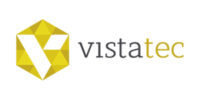When you’re in the process of going global with your business, you understand the value of localization in connecting with your target market in new regions. Adapting your content, products, and services to the culture and language of new regions improves the customer experience. By changing the formats of key information, replacing images and icons, and adapting for cultural context, you can create content that speaks directly to your new audience. Essentially, localization breaks down communication barriers to make content more accessible. According to the Web Accessibility Initiative, digital content must be «designed to work for all people, whatever their hardware, software, language, location, or ability.» This includes making content accessible to people with diverse hearing, movement, sight, and cognitive abilities. Incorporating these factors into localization efforts can make your content truly accessible to everyone.
The Importance of Creating Inclusive Content
Accessibility opens a gateway to greater inclusion. In the same way that localization goes beyond translation, making content accessible involves altering various elements, including visuals, color palettes, and audio, to make it easily understood by every person in the target audience.
Inaccessible digital experiences prevent audiences from interacting with the content as intended. Some of the most common causes of digital inaccessibility include using a single sensory characteristic to convey meaning and websites without the proper coding for assistive tools.
Consider how these examples of inaccessible digital experiences prevent some users from access to content.
- The use of color alone to provide information
- Poor color contrast
- Lack of text alternatives (alt text) on images
- No captions on videos
- Lack of labels that screen readers can convey
- Lack of keyboard navigation
- Unclear instructions
- Missing error indicators
Without these crucial elements, many users cannot interact with digital content as intended. According to the World Health Organization (WHO), 16% of the world’s population experience significant disability. Improved accessibility allows you to reach these users and others affected by situational limitations. For example, an accessible website can also benefit people with slow internet access and those in environments that limit usability. Focusing on inclusive design and building a website designed for accessibility can substantially increase your audience.
Understanding the Implications on Accessibility of ADA Title II Final Rule
Digital platforms are becoming one of the main ways to communicate and conduct business. So, content that is accessible to all individuals is a necessity. To ensure equal access to digital content, governments are putting new regulations in place to eliminate barriers for individuals with disabilities. On April 8, 2024, the US Department of Justice (DOJ) published a final rule outlining digital accessibility requirements under Title II of the ADA. The rule applies to public entities, including state and local governments. It requires them to adhere to the Web Content Accessibility Guidelines (WCAG), Version 2.1 Level AA. Accessibility regulations apply to websites, mobile apps, publicly available web content (including video and audio content and social media posts), and digital documents.
Currently, the Final Rule applies to government entities. These include public schools and colleges, public hospitals and healthcare clinics, state and local courts, and public libraries. Organizations that sell technology to public entities must also be compliant.
The EAA is the European Union’s legislative equivalent and is due to be implemented in June 2025. This regulation ensures that people with disabilities and older individuals can more easily access a broad range of services and products, including websites, apps, online shopping, banking, and transportation. Previously, laws primarily targeted public sector websites, but the EAA extends its reach to include the private sector.
Lawsuits against website owners alleged to have breached the ADA have increased rapidly. There was a 62% increase in digital accessibility lawsuits against businesses with accessibility widgets or overlays on their websites in 2023 compared to 2022. Widgets and overlays alone are rarely enough to ensure accessibility without bugs and errors. They should be combined with audits and other professional services to improve accuracy. Any business that ignores digital accessibility can face fines and legal challenges.
Enhance CX and Accessibility with Inclusive Content
Localizing your content to the language and cultures of a new target audience and making your content more accessible have similar goals. When you apply an accessible and inclusive approach to localizing global content, you can reach a wider audience.
The localization landscape is evolving with technological advancements, such as:
- Devices that allow deaf and hard-of-hearing individuals to read subtitles or watch content translated into sign language
- Devices that enable blind and visually impaired patrons to hear audio descriptions of video content
When accurate localization is applied with such tools, the content becomes inclusive for your target audience in new regions. For example, localization projects require alt text, audio, captions, transcripts, alt texts, and audio descriptions to be translated into the target language. When sign language is used, it’s critical to recognize the different versions used across countries and regions.
A combination of automated testing tools and manual evaluation, along with seeking and implementing feedback from target users, is the best way to ensure complete accessibility. For example, an accessibility widget that supports ADA/EU compliance combined with manual testing performed by WGAC auditing professionals can help you achieve WCAG 2.1 Level AA compliance.
Similarly, successful localization often includes the use of translation tools along with professional services to adapt content to the required local nuances and requirements of a particular market. Implementing feedback from your target audience is also critical to success. By working with native-speaking localization experts and implementing feedback from individuals with disabilities, you can gain insight into gaps in the process and make corrections as needed.
Making Your Content More Accessible With Localization Services From Vistatec
Localization makes content accessible to a target audience. It works by adapting content to reflect the local culture, laws and regulations, language, dialect, trends, and more. However, without taking measures to improve accessibility, your content will contain barriers that limit your audience. By taking an inclusive and accessible approach to localization, you can create content that speaks to your entire audience.
The localization specialists at Vistatec have the knowledge and experience to understand the local nuances and requirements of a particular market. Our teams provide bespoke localization for greater cultural sensitivity that may include:
- Designing and modifying content
- Ensuring layouts are appropriate and accurate
- Adapting content to reflect the local culture and laws of your target audience
Contact us today to learn how we can help you make your global content more accessible to your target audience.

